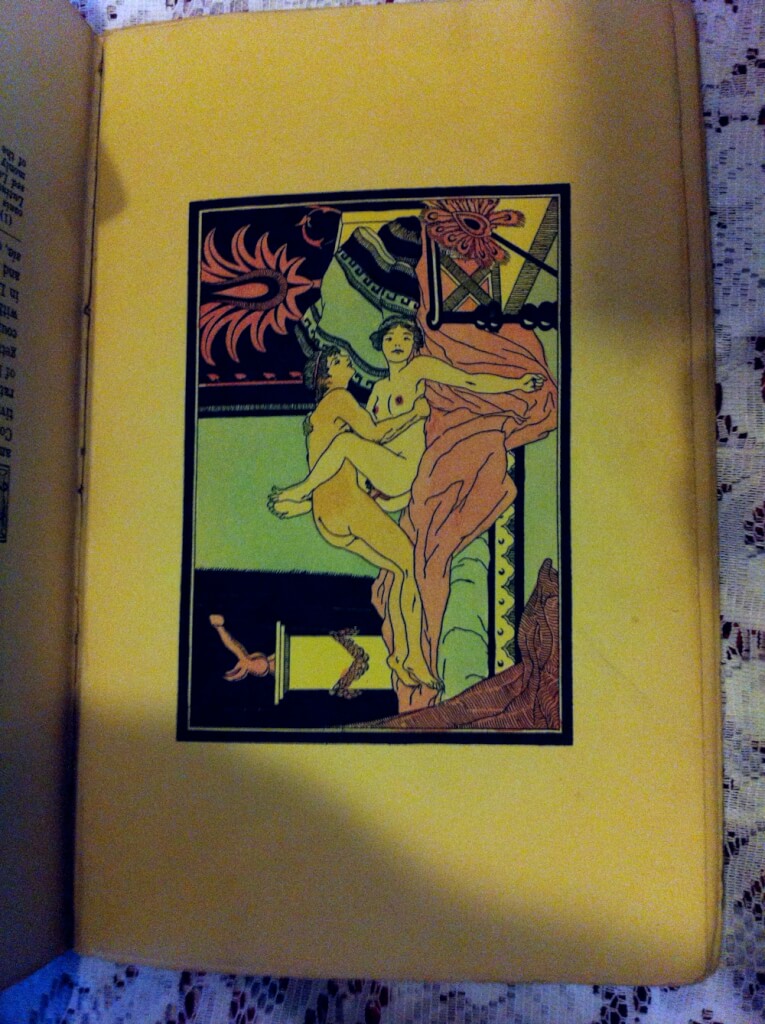The Songs of Bilitis, Translated from the Greek, Put into English from the French of Pierre Louys by Horace Manchester Brown, illust. James Fagan (Privately Printed for Members of the Aldus Society, London and New York, 1904, #30/971)
7.25″x10.25″, 341pp., 3/4 blue leather over blue boards, gilt decorations on boards, gilt titles and gilt and color decorations on spine, marbled boards, top edge gilt, other edges deckled, frontispiece portrait of author and two original etchings by James Fagan, good+ condition for age, some rubbing on spine and bumping to corners.
Early (first?) translation of Les Chansons de Bilitis, rare and beautifully bound english translation of this classic in lesbian literature.
The Songs of Bilitis (Les Chansons de Bilitis) is a collection of erotic, essentially lesbian, poetry by Pierre Louÿs published in Paris in 1894. Since Louÿs claimed that he had translated the original poetry from Ancient Greek, this work is considered a pseudotranslation.
The poems are in the manner of Sappho; the collection’s introduction claims they were found on the walls of a tomb in Cyprus, written by a woman of Ancient Greece called Bilitis, a courtesan and contemporary of Sappho to whose life Louÿs dedicated a small section of the book. On publication, the volume deceived even the most expert of scholars. Louÿs claimed the 143 prose poems, excluding 3 epitaphs, were entirely the work of this ancient poet — a place where she poured both her most intimate thoughts and most public actions, from childhood innocence in Pamphylia to the loneliness and chagrin of her later years. Although for the most part The Songs of Bilitis is original work, many of the poems were reworked epigrams from the Palatine Anthology, and Louÿs even borrowed some verses from Sappho herself. The poems are a blend of mellow sensuality and polished style in the manner of the Parnassian school, but underneath run subtle Gallic undertones that Louÿs could never escape. To lend authenticity to the forgery, Louÿs in the index listed some poems as “untranslated”; he even craftily fabricated an entire section of his book called “The Life of Bilitis”, crediting a certain fictional archaeologist Herr G. Heim (“Mr. C. Cret” in German) as the discoverer of Bilitis’ tomb. And though Louÿs displayed great knowledge of Ancient Greek culture, ranging from children’s games in “Tortie Tortue” to application of scents in “Perfumes”, the literary fraud was eventually exposed. This did little, however, to taint their literary value in readers’ eyes, and Louÿs’ open and sympathetic celebration of lesbian sexuality earned him sensation and historic significance.


















